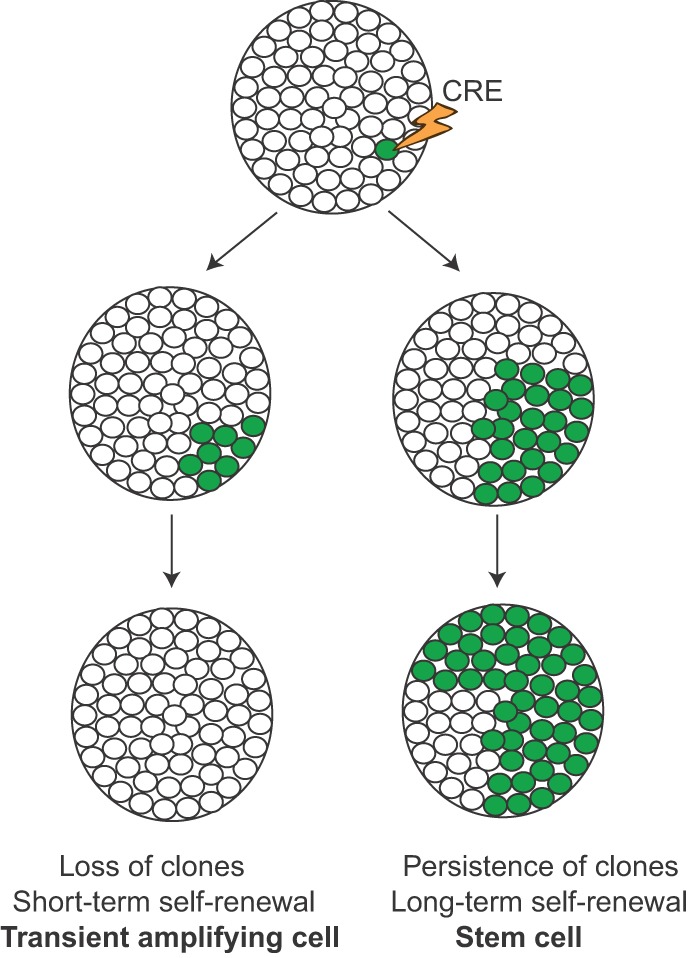Fig. 2.

Use of lineage labeling to identify stem cells during development and tumor progression. Using inducible Cre-recombinase technology (Box 2), cells within a lineage are sparsely labeled to provide the resolution necessary to identify clonal populations. After a short period of time, labeled progeny (shown in green) become apparent. If the original labeled cell is a genuine stem cell, the labeled clones will persist over the lifetime of the tissue (or tumor) because the stem cell is continuously self-renewing and producing differentiated daughter cells. If, on the other hand, the labeled clones are lost over time, the original labeled cell was most likely a transient amplifying cell, which is capable of short-term self-renewal but eventually becomes terminally differentiated, no longer contributing to the pool of cells. This test is not only useful for identifying stem cells and cancer stem cells but also for detecting drug-resistant clones. After sparse labeling and chemotherapy, drug-resistant clones will persist and begin to take up a much larger fraction of the tumor cell population, much like a stem cell.
